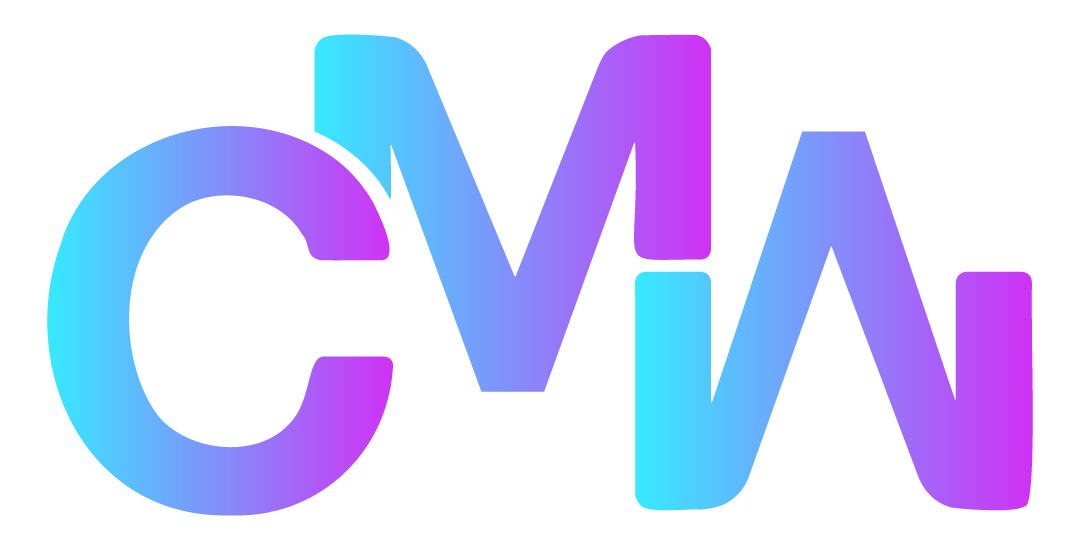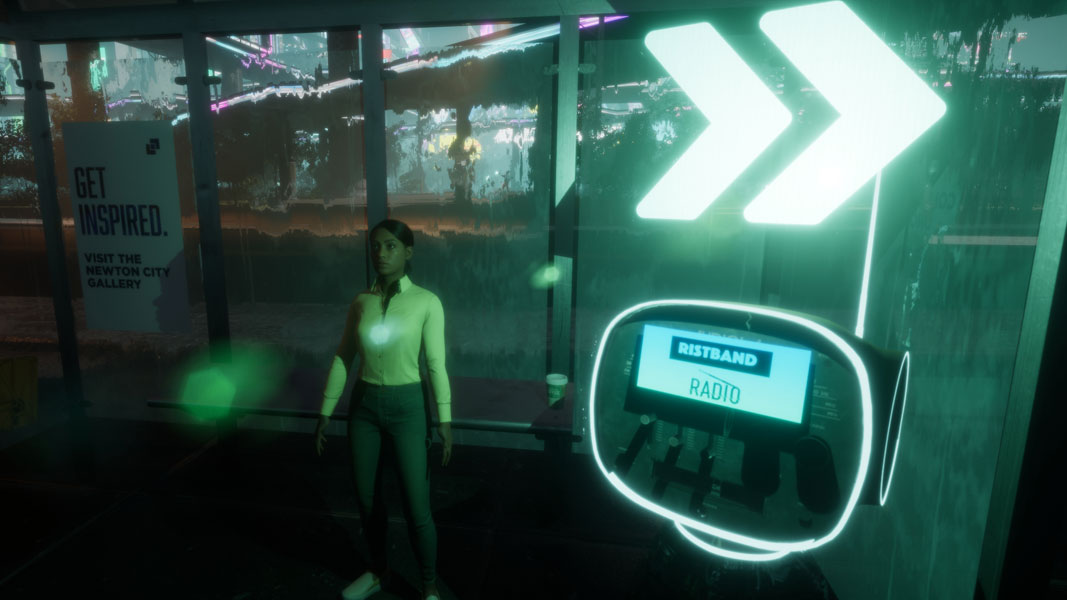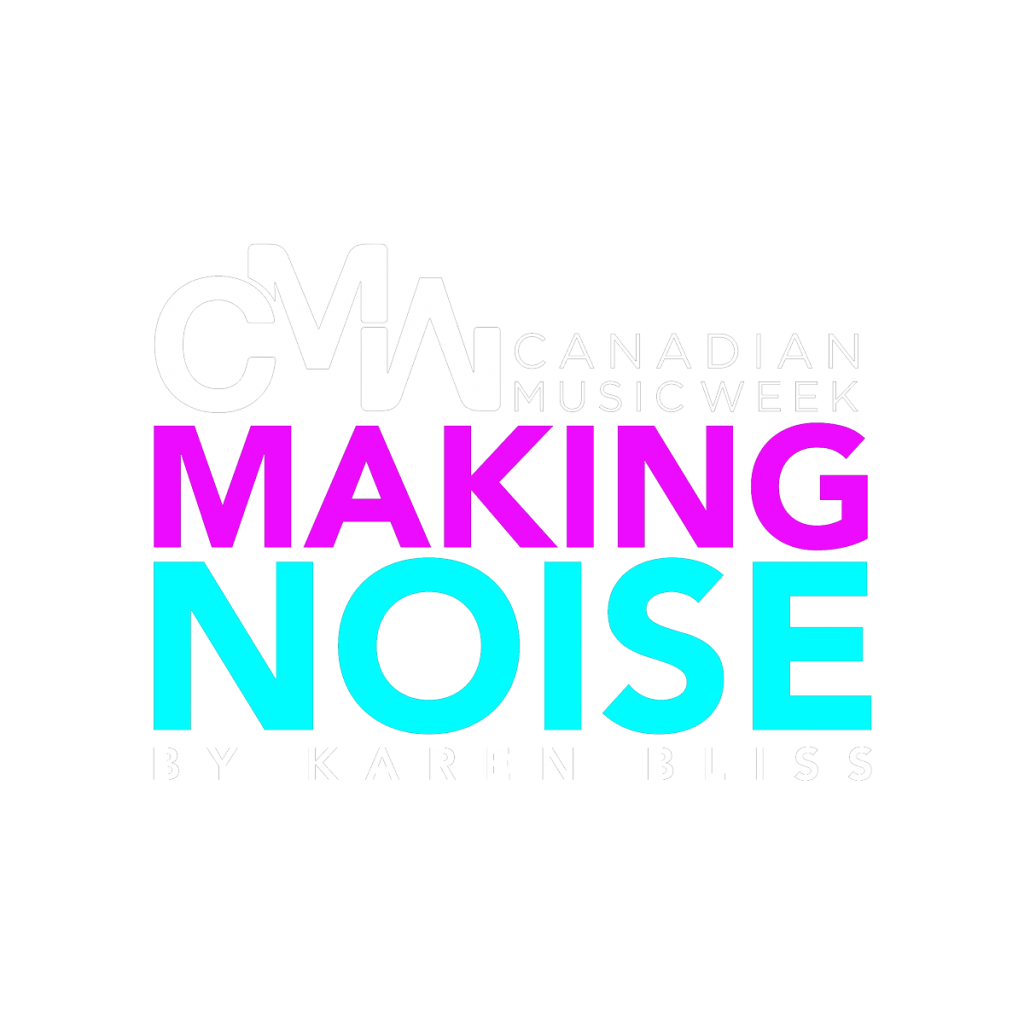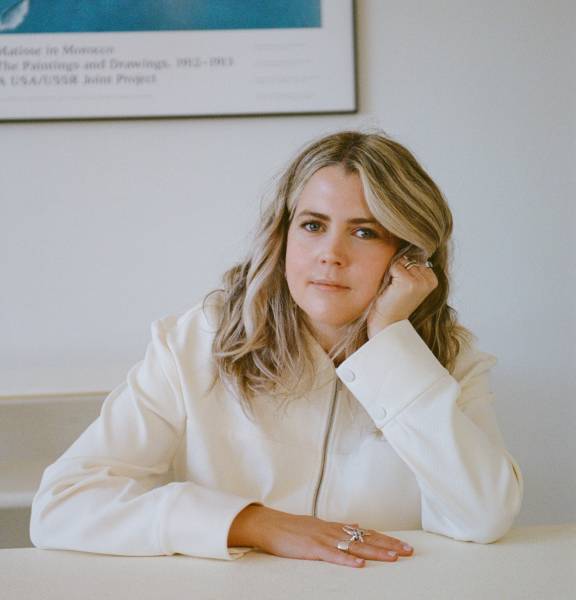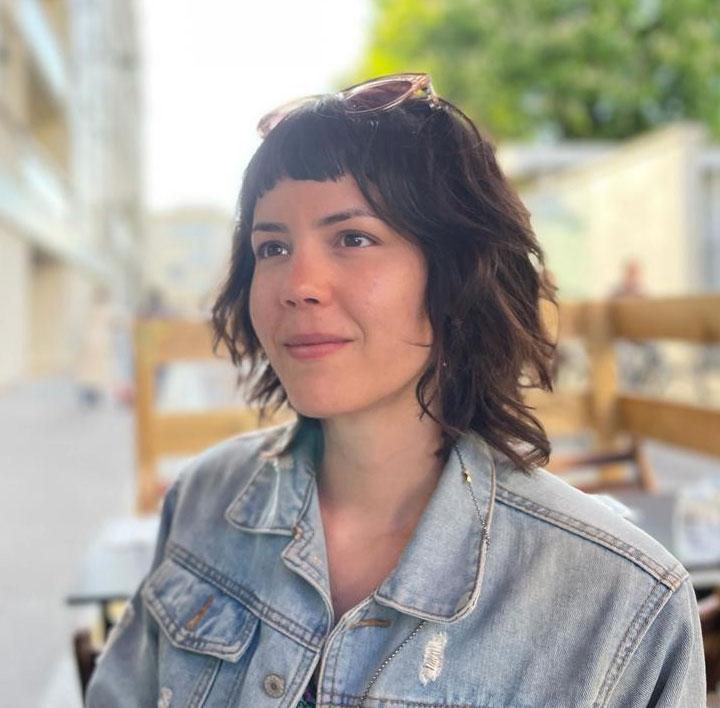
BY KAREN BLISS
Founded by transplanted Canadians Anne McKinnon and Roman Rappak, gaming platform Ristband offers a new revenue stream option for the music industry, in addition to simply being a cool way for artists to engage with fans by performing virtual concerts and offering digital assets, such as art, merch and unreleased tracks. Entering the gaming space or utilizing some of the engaging elements that has attracted more than 3 billion gamers around the world is sound business going forward.
According to figures reported by The Nielsen Company’s SuperData Research, in 2020 the music industry was valued at $19.1 billion (USD) compared to the gaming industry at $159.3 billion in 2020.
McKinnon, who was born in the U.S., raised in Canada and now lives in Paris, and Rappak born in Canada but residing in London and Paris, founded Ristband in 2021. They met after McKinnon saw his alternative band, Miro Shot, perform at Nuit Blanche in Paris. “The show was, and still is, way ahead of its time,” McKinnon tells Making Noise, adding, “It’s evolved a lot since I first saw it in 2017.”
She went on to work for their label, Believe, and book their live virtual reality shows at festivals and events, including GITEX Dubai, SXSW Austin, London Fashion Week, and the Institute of Contemporary Art in Amsterdam.
In January 2023, McKinnon, who also worked as a tech journalist and in 2022 published the first Report on Diversity in the Metaverse, was profiled in IQ magazine as one of the 10 “architects who are helping to shape the [music] industry of the future.”
Ristband just announced its first public event in Paris, Sept. 28, with a date in London to be added next month. They will also be holding invite-only showcases “for friends of Ristband, celebrating the incredible year we’ve had, and the people we’ve worked with, offering a unique look at what we’re creating,” the release reads.
McKinnon spoke with Making Noise about Ristband and how it can benefit the music industry.
What is Ristband?
I want to give an example of one of our recent events to help contextualize that because we’re looking at what’s the place for music in the virtual worlds, where there’s 3 billion people consuming content in this way. No one’s really answered the question of how can artists really participate? And I think that’s a really exciting moment, as we’re defining this medium for music to exist in these worlds.
So Ristband did an activation at SXSW. We were the official Future x Music Showcase this year. We won the Audience Award for the event that took place both in the real world and in our platform, which is virtual world. So looking at how we can extend live events into digital spaces, where people can attend from all over the world. The live event, we had this amazing band called Miro Shot doing XR shows, then we had three bands throughout the evening. Those also took place in Ristband, in a virtual world, where people could attend online and discover the artists and their work and their artwork.
What was your educational journey? Tech? Gaming? Music?
I studied journalism law at Carlton University in Canada. I moved to Los Angeles. I was very interested in what was happening in technology and entertainment and I worked with a lot of deep tech startups, supporting them through growth and acquisition. At the same time, I was also very active as a journalist in this space, which meant I got talk to everyone from big tech CEOs to developers to creatives by going to conferences around the world. One of those events I attended was Nuit Blanche in Paris, which is an all-night tech and music festival. I saw this band named Miro Shot that was doing these incredible live virtual reality concerts, where they had an audience come into a physical space, wear headsets and the band performed live with projection mapping and custom scents. That was my journey into getting to understand the music industry and working with artists. It was a lot of the things I saw these big tech companies speaking about and here was this independent band actually doing this incredible live show VR.
After I published an article on the live VR concert, Miro Shot’s management introduced me to the band’s label Believe. They hired me to do PR and partnerships for the band, focusing on technology outlets, festivals, and brands. It was my first step into the music industry, and the work I did also opened up a lot of new opportunities for Miro Shot. This was back in 2018. That was the beginning of my journey. I worked with my co-founder [Rappak], who is also a musician [frontman for Miro Shot], growing this platform. We were looking for something out there that would serve artists as a tool to reach the audiences online, but we felt there was nothing out there that would help artists with monetization or really speak to the creative and artistic styles and be easy and affordable. So that was how we started and why we started building Ristband. We worked on the concept for a few years and launched in 2021.
Everyone jumped onboard to watch livestreamed shows during the pandemic, and then it seemed people got fed up with it and just held out for live concerts again. How can Ristband be used to reach the audience not already consumed by gaming and understand this virtual world?
Live people will always go to live events. That is always the thing people save up for every year. They go with their friends, they make memories when they’re at physical festivals in the real world. But at the same time, we have this young generation of new music fans who are spending 10 hours a week, every single week in virtual world, and it’s much more than a game and much more than their social media; this is where they’re hanging out with their friends. It’s a new place to distribute music and a new place to monetize music, and that’s really exciting.
Can you walk us through how a big company might use Ristband and how an individual artist or band could use it?
We have open calls for our events. For example, at SXSW earlier this year, we had an open call, working with different artists from all over the world. We have an upcoming event series that will take place at physical venues across London and Paris. Those venues will be having an open call for artists and that content will also be distributed in Ristband. Over the years, we’re going to create a consumer facing platform where any artist can go and create an experience adjacent to their touring schedule or a meet-and-greet in the virtual world. But at this stage, we’re doing a lot of open calls, figuring out what is best for the medium, what works best for the artist, and really driving it from an audience first perspective and what is exciting for the audience today.
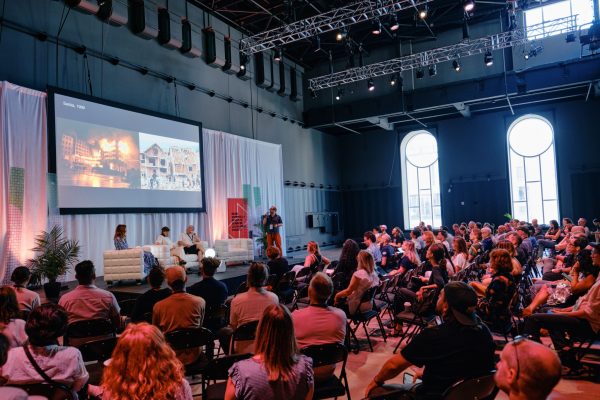
Who creates the content?
We create all the content in-house. We also have tools in-house. We also have a lot of artists approach us who are already working with Unreal Engine and digital content. Those are the artists I feel are most comfortable in the space and, also, have their fanbases in these spaces already. That’s typically the way we work right now.
What types of artists would this work best with? A Bruce Springsteen, a Steve Earle, who have bare minimum stage production, might not resonate in the virtual world.
Who is it for in terms of the artist? Any artist of any genre who is excited about reaching their fans in these virtual worlds and digital spaces. For example, I was at Mutek, an electronic music digital arts festival in Montreal, and a lot of those artists are already creating AV sets, creating virtual worlds, and they are driving the movement taking place in these virtual spaces already. It’s great to see that this isn’t being driven from just tech world. This is very much artists driving the movement in this space, and they’re kind of dictating how this next generation of audience, fan, and artist relationship is taking place in these virtual worlds.
What are the specific ways it’s different than simply livestreaming your concert?
It’s very different than livestream. It’s an extension of the music video into games and virtual worlds. A lot of it is following the same rituals of a live event. So if you’re attending an event in Ristband, you log in, you choose your avatar, and you can customize what your avatar is wearing. You go into a world which is a 3D space. Very much like in the real world you go walk around a physical city, in Ristband you go and walk around a digital city, and you can discover new music, speak with your friends, you can purchase digital merchandise, play games and activities, based around an artists’ album and stories and narratives.
That is at the same time that that artist is also performing a live concert for a live audience, or it doesn’t have to be?
It doesn’t have to be. A lot of the times, we do like to have it coincide with a physical event in the real world, but we also do events and activations that take place just through Ristband digitally.
When you’re talking with promoters, managers, artists themselves, what are their concerns about utilizing Ristband?
I think their concerns are what’s best for the artists and what’s best for their company, so their questions to us are how can Ristband be a part of growing their industry — or our industry really — and supporting the artists and supporting the people who work at their company? It’s very much in our interest. The gaming industry is four times the size of the music industry, so how can we open the doors to this gaming market and, also, the experiential market and bring in new revenue models to the music industry?
So I think the interests are so aligned. A lot of it is just about education, about how does this work and how does it benefit my artists? How does this benefit my team? One thing that’s really interesting to add is after my talk at Canadian Music Week this year, there was a team [Canada’s Paquin Entertainment Group] who distributed the Vincent Van Gogh projection mapped experience [Beyond Van Gogh: The Immersive Experience] at venues all over the world. That market is huge right now, and it’s going to double by 2028 and they’re selling tickets to these shows every 20 minutes. They’re selling out venues all over the world. That is another very exciting way for music to be distributed. That’s a new business and revenue model.
Does Ristband have any competitors?
Yeah. People would consider our competitors to be Sandbox, Decentraland and Roblox. But when we’re looking at those platforms, are any of these platforms designed for artists, designed for music industry or the live music industry, and they aren’t. In terms of what our focus is and who we’re trying to support and our vision, it’s extremely different.
We saw Apple become a music company. Who are you looking to hire? Who do you need on your team?
We hire a lot of developers. We work with a lot of managers. In terms of your question earlier, which is what’s the role of the music industry working with virtual worlds, is we collaborate with the majors. We’ve got a good relationship with Otisha Sealy, who’s the first head of gaming at Universal Music [in London]. We have a lot of these collaborations. These worlds are just converging more and more. I don’t think that they’re going to grow separate. All the roles currently will continue to exist and transform in really exciting ways.
Speaking of revenue, people are always complaining about ticket prices, many not realizing the escalating costs since the pandemic of gas, hotel, production. What kind of figures are we talking in additional revenue from adding virtual incentives?
We work with artists and, for example, with festivals in different ways. At times, we do revenue splits. Often, we bring in brands that cover development costs, so we’re not charging artists, we’re supporting artists with revenue opportunities. All our online experiences in Ristband are freely accessible. There’s also an option to do ticketed events in Ristband accessible to audiences around the world. The idea is like in games, virtual worlds, purchasing digital assets and merchandise is a behavior that’s been around 40 years. So having that scale of, ‘I don’t have to pay any overhead to have a t-shirt printed and then sell it and then also carry it and transport it on my tour. I can be reaching thousands and thousands of people online, who are purchasing my digital merchandise for three or four dollars, and then that adds up hugely at scale,’ it’s economics at scale, when we look at games and sports virtual worlds for digital goods, merchandising and ticketing.
People are worried now about how their jobs will be affected by tech developments, which could be virtual reality to A.I. How can you allay their fears that this is not a replacement for their skills and expertise in the live industry?
Humans want to engage with other humans. That is the most special experience. If a platform wants to have the best content, they have to work with real people and real artists, and that audience always votes with their feet, whether that’s physical, going to a festival in the real world, or digital footprint, going as their avatars to an event online. They will always go to where art and culture is taking place. That is driven by real people.
Ristband provides the headsets? If so, how many do you own? What are the venue capacity limitations and can people bring their own for comfort and cleanliness?
Yes, we provide headsets for our live immersive experiences and shows. The show is modular, meaning we scale up or down to accommodate the venue size and capacity, including the number of headsets provided. We’ve worked with independent venues, and also held the show in warehouses, concert halls, churches, galleries, cultural institutions and at festivals around the world. Headsets are sanitized between each use, and are adjustable to fit each attendee comfortably. Attendees cannot bring their own headset as we custom rig our hardware and software for these experiences. An at home audience experiences an extension of the live event in our digital platform which is accessible via Mac, PC, and mobile.
How have you found introducing Ristband at music conferences and festivals?
At Canadian Music Week, the guy [Justin Paquin, president, Paquin, exhibitions & theatrical division] speaking after me was the distributor of Vincent Van Gogh immersive experiences. That is an indicator from a huge festival in Canada that’s saying, ‘Okay, what’s the new market for music distribution?’ Experiential and immersive. And SXSW is bringing together all of these tech businesses and combining that with live music performances. And at Mutek, I experienced their XR collection, which is three live performances that were reimagined as XR art pieces and distributed on Steam, which is essentially a distribution platform where people can buy games. It’s really the first time where I’ve seen a someone, a festival, say how can we create a piece of content that then gets distributed through the gaming industry platforms and open up new route monetization for artists.
So again, we’re at this really early stage of this exciting movement, where the music industry is suddenly having access to the tools and platforms and distribution models that are typically reserved for the gaming industry. I think we’re going to see more and more of these experiments. A lot of them are being driven by artists who are working with these tools, very similar to the way we saw artists experimenting with synthesizers, and then new genres and new ways of distributing music emerged. So it really is a great time to be exploring this space.
